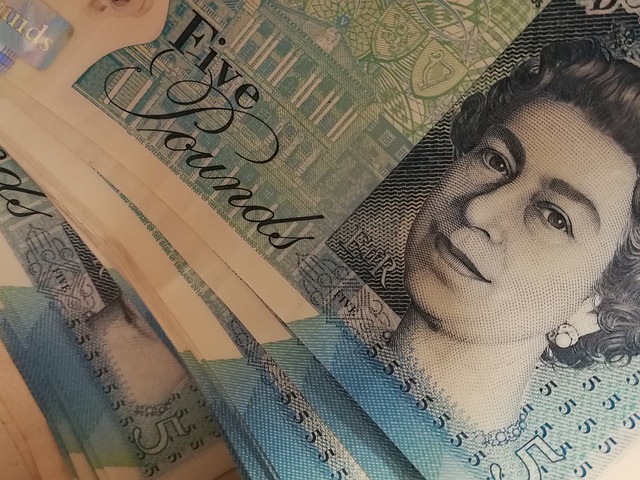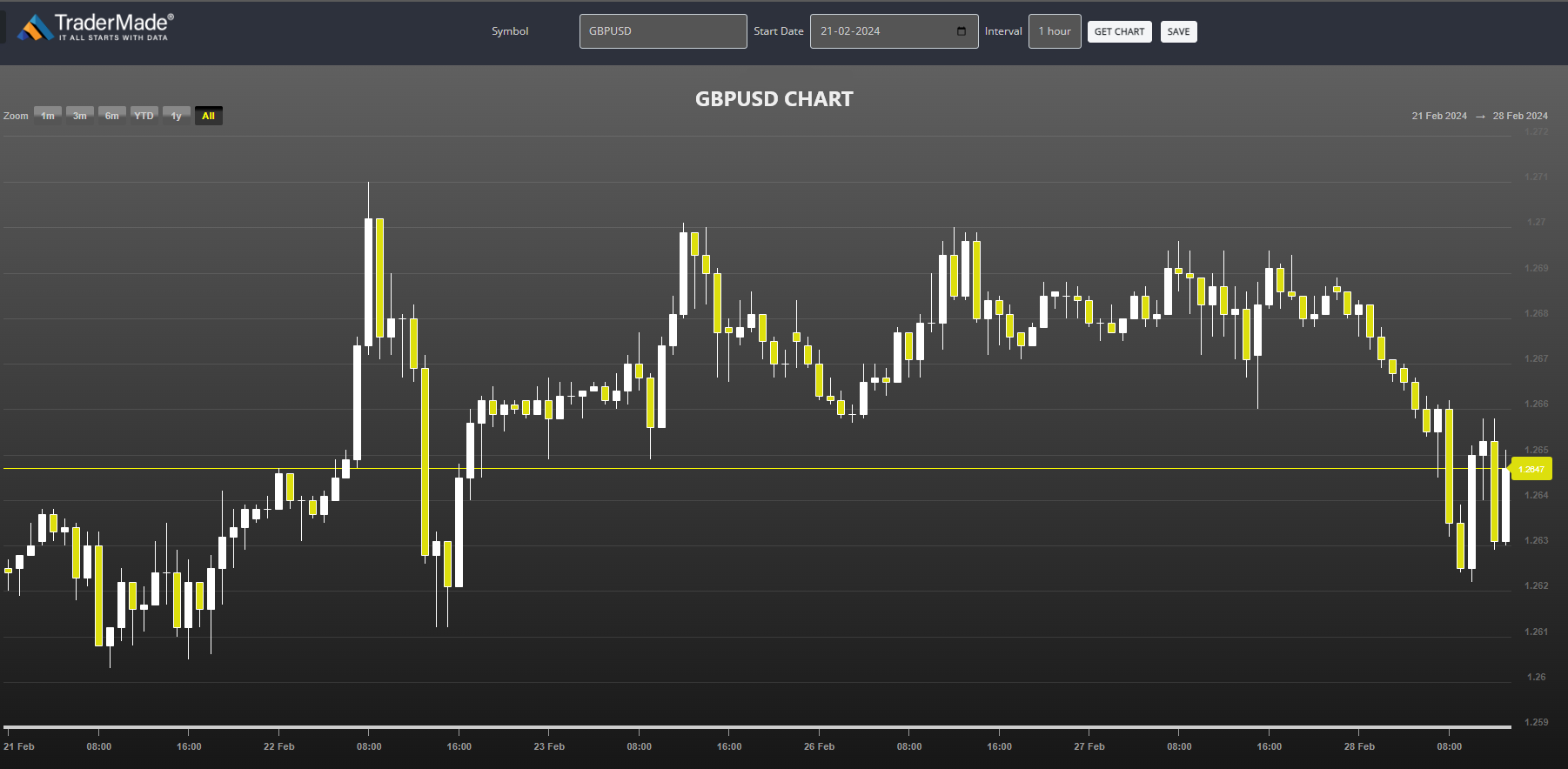
Pound Stumbles Ahead of US Inflation Data Release
London: 28 February 2024 (TraderMade): The Pound Sterling (GBP) faced a setback against the US Dollar (USD) on Wednesday, ending its seven-day winning streak. This shift reflects a cautious market sentiment as investors brace for releasing crucial US inflation data on Thursday.
The GBPUSD pair declined by 0.54% over the last week, and is currently at 1.2641.
Key Takeaways
- GBPUSD: Sterling loses momentum against the USD after a 7-day winning streak, dipping to a 3-week low on Wednesday.
- Market Sentiment: Cautiousness prevails ahead of crucial US inflation data release on Thursday.
- US Inflation Data: Analysts expect signs of cooling inflation, potentially influencing the Federal Reserve's policy decisions.
- BoE Rate Cuts: The Bank of England may maintain higher interest rates for longer than the Fed due to persistent inflation in the UK.
- Future Outlook: GBPUSD's direction hinges on the US inflation data and its impact on the Fed's stance, alongside BoE rate cut expectations and the UK Spring Budget.
GBP Performance and Outlook
The GBPUSD pair fell to $1.2645 on Wednesday, marking its most significant one-day drop over three weeks. This decline reflects the cautious market sentiment and the potential implications of the upcoming US inflation data on the relative attractiveness of the US Dollar compared to other currencies like the Pound.
The future direction of the Pound Sterling remains uncertain and will likely depend on the outcome of the US inflation data release and its impact on the Fed's policy outlook.
Additionally, market expectations for BoE rate cuts and the upcoming UK Spring Budget next week will also be important factors influencing the performance of the Pound.
GBPUSD: Rangebound Before Key Data Release
GBPUSD experienced a narrow trading range over the past week (21 to 28 February 2024), ending the period at 1.2644. Despite a brief attempt to break above 1.27 on 22 February, the pair remained stuck between 1.2602 and 1.2699.

Key Observations
- Limited volatility: The price movement lacked significant directional bias, indicating indecision among market participants.
- Resistance at 1.27: The pair encountered resistance around the 1.27 level, potentially suggesting a short-term hurdle.
- Support holds: The price held above 1.26 provides temporary support.
Looking Ahead
The lack of a clear technical direction suggests that GBPUSD may continue to trade sideways in the near term. However, releasing critical US inflation data on Thursday could inject volatility and influence the pair's future trajectory.
Overall, the GBPUSD trajectory over the past week suggests a cautious market awaiting further fundamental cues.
Market Cautiousness Prevails
On Wednesday, risk aversion dominated the market, with investors preferring safe-haven assets like the US Dollar ahead of the US core PCE price index data release.
This data, scheduled for Thursday, is a crucial indicator of inflation in the US and is closely monitored by the Federal Reserve (Fed) when making decisions about monetary policy.
Inflation Data Expectations
Market analysts anticipate the US Core PCE price index to show a decline compared to the previous month, potentially indicating a cooling down of inflation in the US.
The US Core PCE data could influence the Fed's future policy decisions, particularly regarding interest rates.
BoE and Rate Cuts
The Bank of England (BoE) may maintain its current higher interest rate stance for a more extended period than the Fed.
This anticipation is due to stubborn inflation in the UK, particularly concerning wage growth and service inflation. While these indicators have shown some decline, the decrease pace remains inconsistent with the BoE's target of 2%.
To Summarize
Overall, the cautious market mood and the anticipation of critical economic data releases halt the recent momentum of the pound sterling. Investors are now closely watching the US inflation data to see if it paves the way for adjustments in the Fed's monetary policy, which could have ripple effects on global currency markets.


